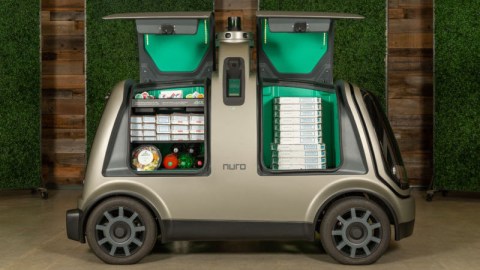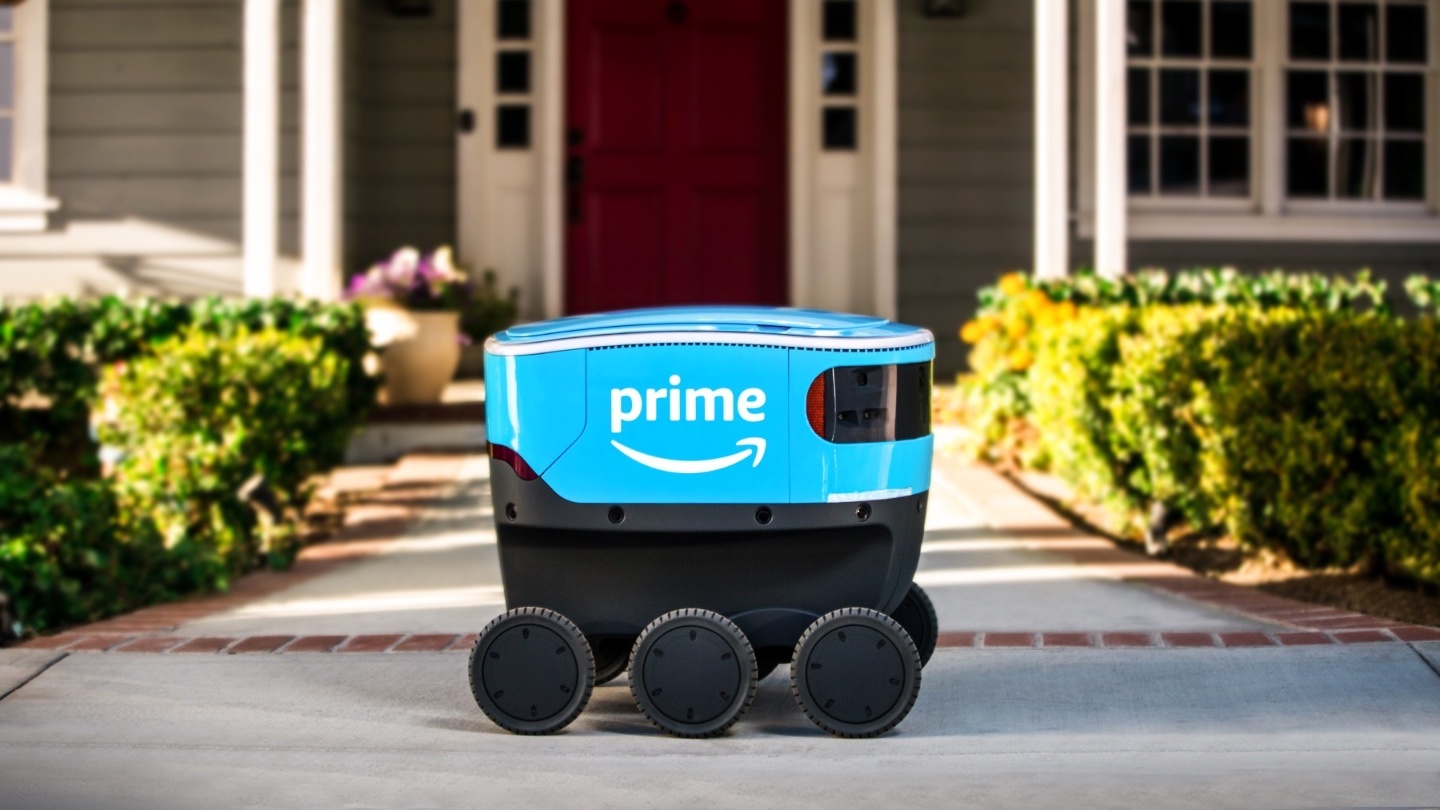Robot pizza delivery coming later this year from Domino’s

Nuro
- Domino’s partnered with the Silicon Valley startup Nuro to have robot cars deliver pizza.
- The trial run will begin in Houston later this year.
- The robots will be half a regular car and will need to be unlocked by a PIN code.
Would you have to tip robots? You might be answering that question sooner than you think as Domino’s is about to start using robots for delivering pizza. Later this year a fleet of self-driving robotic vehicles will be spreading the joy of pizza throughout the Houston area for the famous pizza manufacturer, using delivery cars made by the Silicon Valley startup Nuro.
The startup, founded by Google veterans, raised $940 million in February and has already been delivering groceries for Kroger around Houston. Partnering with the pizza juggernaut Domino’s, which delivers close to 3 million pizzas a day, is another logical step for the expanding drone car business.
Kevin Vasconi of Domino’s explained in a press release that they see these specially-designed robots as “a valuable partner in our autonomous vehicle journey,” adding “The opportunity to bring our customers the choice of an unmanned delivery experience, and our operators an additional delivery solution during a busy store rush, is an important part of our autonomous vehicle testing.”
How will they work exactly? Nuro explained in its own press release that this “opportunity to use Nuro’s autonomous delivery” will be available for some of the customers who order online. Once they opt in, they’ll be able to track the car via an app. When the vehicle gets to them, the customers will use a special PIN code to unlock the pizza compartment.
Nuro and its competitors Udelv and Robomart have been focusing specifically on developing such “last-mile product delivery” machines, reports Arstechnica. Their specially-made R1 vehicle is about half the size of a regular passenger car and doesn’t offer any room for a driver. This makes it safer and lighter too, with less potential to cause harm in case of an accident. It also sticks to a fairly low speed of under 25 miles an hour and slams on the breaks at the first sign of trouble.
What also helps such robot cars is “geofencing” technology which confines them to a limited area surrounding the store.
For now, the cars are still tracked around the neighborhoods by human-driven vehicles, with monitors to make sure nothing goes haywire. But these “chase cars” should be phased out eventually, an important milestone in the evolution of your robot pizza drivers.





